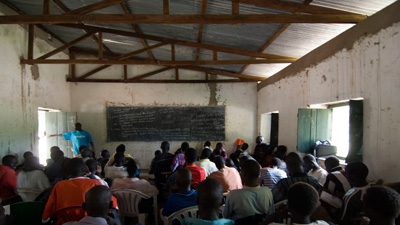KHARTOUM, November 3, 2011—The Community Development Fund (CDF) in Sudan focuses on building and improving social services with while empowering communities. The Sudan CDF has already enabled the implementation of 750 community sub-projects in four areas: health, education, water and solar power. We asked Alassane Sow, World Bank Country Manager in Sudan, about the importance and impact of these activities in the context of Sudan’s overall development.
What are the main objectives of Sudan’s CDF and where are its projects being implemented?
The Sudan CDF is designed as an important element of the Multi-Donor Trust Fund (MDTF)-supported post-conflict recovery program following the signing of the comprehensive peace agreement in 2005. This consists of a portfolio of 15 projects aimed at delivering a peace dividend and bringing a sense of hope. The CDF focuses on addressing social demand and key infrastructure needs for basic economic recovery in affected areas of Sudan. The CDF has been critical in trying to help meet the most crucial demands. It targets four key northern states—North and South Kordofan, Blue Nile and Kassala. Among them, two are border states and one is in eastern Sudan. These areas are mostly impoverished.
Q. What has the CDF achieved so far in these states?
A. The four states are more or less at the same stage of implementation. In total, about 1,000 community sub-projects have been put together, 750 of which have been completed as of October 2011. There are 250 more community sub-projects to be implemented before the closing of the CDF in June 2012. The states are subdivided into smaller administrative units, which we call localities. The CDF covers 50 such localities and a total of two million people, so you can imagine the impact. It is truly a major undertaking.
Q. What kinds of results are evident so far?
A. Positive, I must say. The activities basically cover four main domains: community-based schools, the majority of which are completed; community health care; solar power initiatives; and water facilities. To give you an example, these areas in Sudan where the CDF is being implemented endure very hot conditions, so much so that schools close in early afternoon. Solar power has enabled children and teachers to come to evening school. I have vivid memories of a school that I visited late in the evening on a weekend. We went there at 7 or 8 p.m. and the school was in full attendance. The teacher informed us that this year the school has won a national award for the highest number of passing grades. This would not have been possible without evening classes and solar power.
Q. Do you see the CDF contributing to the overall development of Sudan?
A: No question about it. The primary focus is to get communities to play a leading role in setting their development priorities and to be involved in the implementation of these activities. Rather than being passive recipients of international aid, the focus is now on helping communities to be proactive. They get involved in the procurement of contractors, implementation and monitoring of project activities. We wanted to make sure that the communities are involved in the operation and maintenance and in the sustainability of these activities.
One of the most important benefits of the CDF so far is that the government is realizing that this is a mechanism that generates results. Funding under the CDF includes government counterpart funding of about 45 percent of project costs, a sizeable contribution by any standard. The government would like to scale up and replicate the CDF in other states because this operation addresses the main element of conflict, that is, people’s lack of access to basic social services like education and health care.
Q. Is the CDF building sustainability and local capacity in Sudan?
A. Long-term sustainability is part of the CDF’s vision. Initially, speed out-did quality because donors and government wanted to act fast and grab “low hanging fruits”. As a result, the quality of some of the infrastructure such as schools and health centers may have been compromised. That’s why a sustainability study was done to review the quality of the infrastructure that has been put in place, and to implement an exit strategy to make sure that by the time the project ends, the infrastructure is well-built.
Also, community members are being trained on operations and maintenance to ensure sustainability. For example, when the solar panels need repair, community members are increasingly able to buy and replace the necessary parts.
The ultimate aim of the CDF is to contain hopelessness and to extend this work to 15 states. Local political leaders are already lobbying for it because they realize that CDF-type operations contribute to building their legitimacy. There is a good opportunity to consolidate and scale up this work. The government has been calling for the engagement of donors to pursue this operation and has expressed readiness to continue providing counterpart funds.

